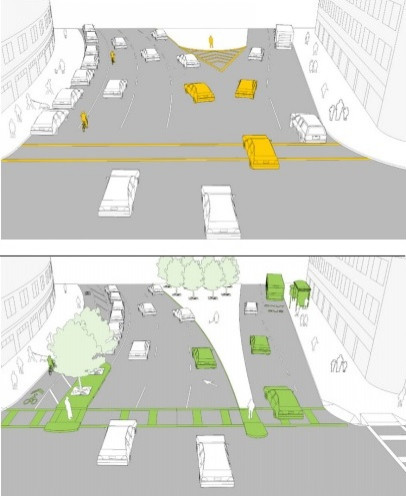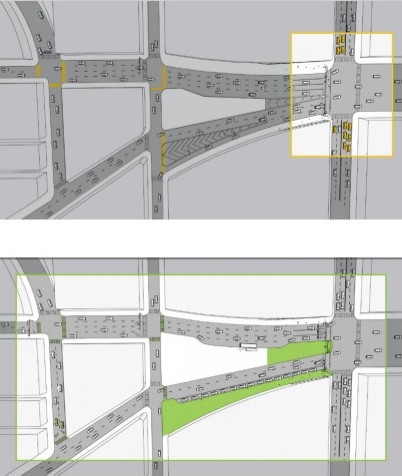NYC Department Of Transportation: Here's How New York City Is Taming Traffic And Saving Lives [PICTURES]

Former New York City mayoral candidate and aptly named online perv Anthony Weiner raised the ire of bicycle enthusiasts when in 2011 he pledged if he were elected New York City mayor he would tear out many of the city’s bicycle lanes.
It might have been an attempt to pander to the car-driving critics of the city’s progressive squeeze against them by promoting pedestrians and demoting drivers, but if so it didn’t work; Weiner not only lost his mayoral bid, but when he was campaigning earlier this year he made sure to be seen on one of those corporate-sponsored bikeshare cycles.

A new report by the city’s Transportation Department suggests that after a decade of lane-narrowing, median-planting and crosswalk-shortening policies, a New Yorker is far less likely to be seriously injured or killed by an unfortunate confrontation with a vehicle’s front end.

According to data compiled by the department from police incident reports, the number of people who have been killed or severely injured in traffic accidents in the city has declined from 5,897 in 2001 to 4,203 last year, a formidable 29 percent decline. Mayor Michael Bloomberg, who took office in 2002, made reinventing city streets a priority of his legacy, and evidence of that is seen throughout the city. Longtime residents often marvel (or scorn) at just how rapidly city streets have changed, especially in Manhattan.

Some of the key strategies, besides more dedicated bike lanes, has been to reduce the length of crosswalks at wide north-south avenues by installing pedestrian islands; by assigning more turn-only lanes; by pushing parked cars farther away from corners to increase visibly between drivers and pedestrians; and to make some streets narrower to reduce traffic at key points in the city. One of the less noticeable changes has been to adjust the timing of pedestrian walk signals to give walkers a better head start on drivers before the signal turns green.

The woman behind Bloomberg’s reshaping of the way drivers, pedestrians and cyclists interact in the Big Apple in recent years is Transportation Commissioner Janette Sadik-Khan, who has overseen the Sustainable Streets program since a year before its inception in 2008. Sadik-Khan been praised for implementing changes to the city’s streets that have improved pedestrian and cyclist safety at a relatively low cost and without major traffic-snarling construction projects. Her fate in a post-Bloomberg era is unknown. She could be kept on by the next administration, although the landslide winner of Tuesday's election, Public Advocate B ill de Blasio, once called Sadik-Khan a “radical” for her aggressive expansion of bike lanes.

The city’s evolving changes to street design predate Sadik-Khan and, to a lesser extent, Bloomberg himself. But the pace of change has accelerated so much since 2001 that longtime residents can remember not too long ago when there were no painted bike lanes running up major avenues, or when (only four years ago) cars could travel through Times Square on Broadway, which is now shut off vehicles and handed over to locals, tourists and street vendors.

© Copyright IBTimes 2025. All rights reserved.






















